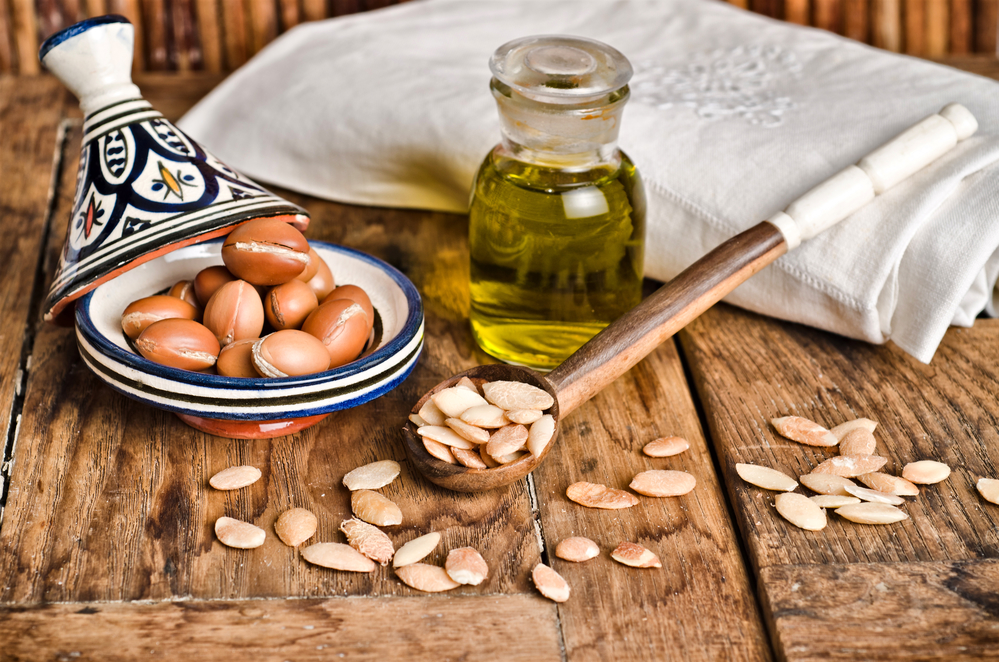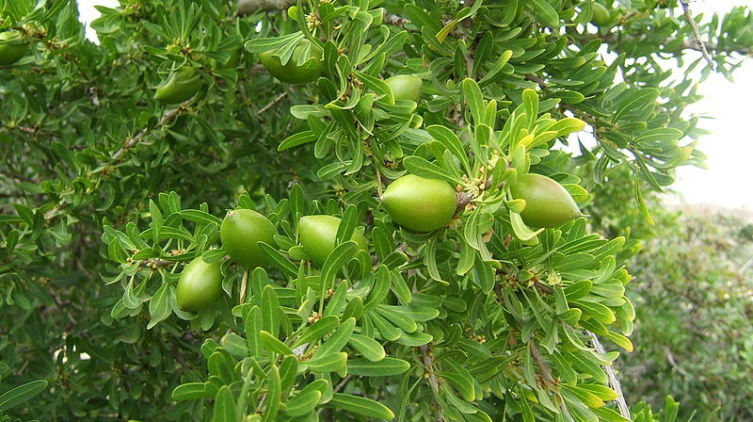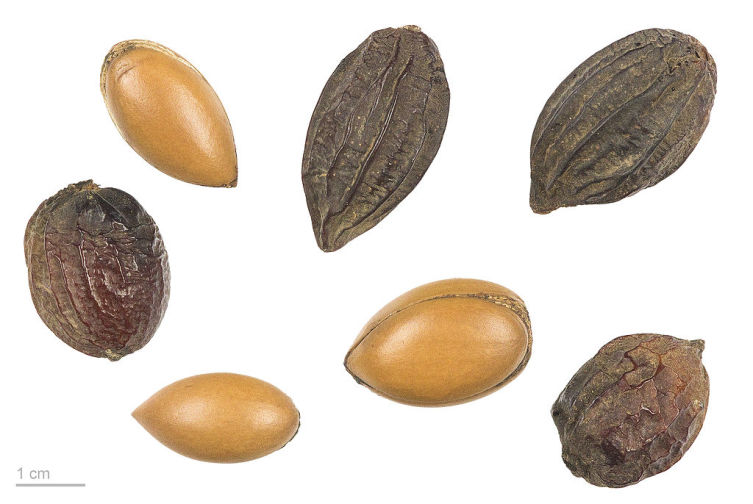Prickly argania (Latin: Argania spinosa) from the Sapotov family grows only in southwestern Morocco. A tree with thorny branches, reaching 8-10 m in height and living 150-200 years.
For the strength of wood, argania is sometimes called the “iron tree.” Blooms in April, the flowers are small. The fruits ripen for a whole year, their flesh has an unpleasant odor, but local goats liked it. In shape, the fruits of argania are similar to lemons, but they are green in color, and, having cut them, you see that their structure is different from the structure of lemon.
The pulp contains nut seeds with a very hard shell. If you remove the kernels from them and squeeze out the oil, only by cold pressing, you get argan oil, which has come into fashion over the past 20-30 years: in SPA complexes, for use in the form of bathtubs, for various masks, for massage. It is also used as food.
The annual production of argan oil in Morocco does not exceed 3 million liters. But sold in the markets of the USA, EU, Russia, Japan and China many times more precious substance. In St. Petersburg, argan oil is sold at about 1,400 rubles per 25 milliliters.
Locals in the places where the argan tree grows have been using argan oil for centuries to add amla (crushed almonds, honey and argan oil) to pasta, which is eaten for breakfast in Morocco. I mean, the impoverished inhabitants of the desert outskirts of Morocco have eaten such pasta for centuries. But can they afford it today, when oil has become liquid gold, including at a price?
Trees bear fruit only once every two years, bringing up to 6−8 kg of fruit. About 100 kg of nuts are obtained from 100 kg of fruits (a crop with more than a dozen trees), of which 1 liter of precious oil is squeezed. The cost of oil today is about the same as caviar, black caviar.

Argan fruit, seeds and oil, used for casmetic and alimentary products
Argan nuts are very strong, it is difficult to break them even with a stone. Local residents have for centuries proven technology for softening nuts. They drive local goats into the trees. The height of the trees is up to 15 meters, and the trunk is clumsy and twisted, along this trunk local goats get to the fruit of the tree without any problems. Goats eat the fruits, and the shepherds then rake their “nuts” carefully choosing all the argan nuts. Having passed the goat’s gastrointestinal tract, these nuts are already softened, and it’s much easier to break them than if you just get them from the fruit.
Scientists are interested in argan oil relatively recently, at the end of the last century. And they found in a rare product that Moroccans have been flaking their meager breakfasts for centuries, a set of incredibly healthy substances.
The Moroccan government has banned the export of argan nuts, the country exports only argan oil. In 1999, UNESCO declared the region in which argan trees grow a biosphere reserve. They have been trying to expand the planting of these trees for over 20 years.

